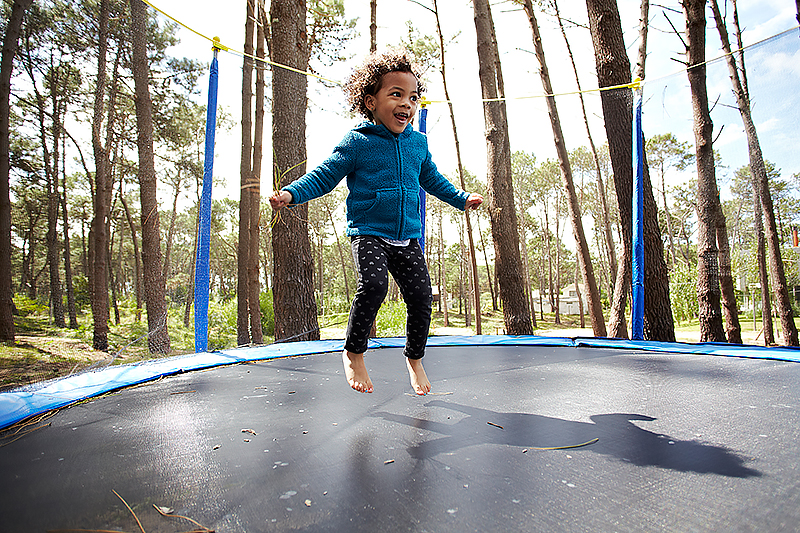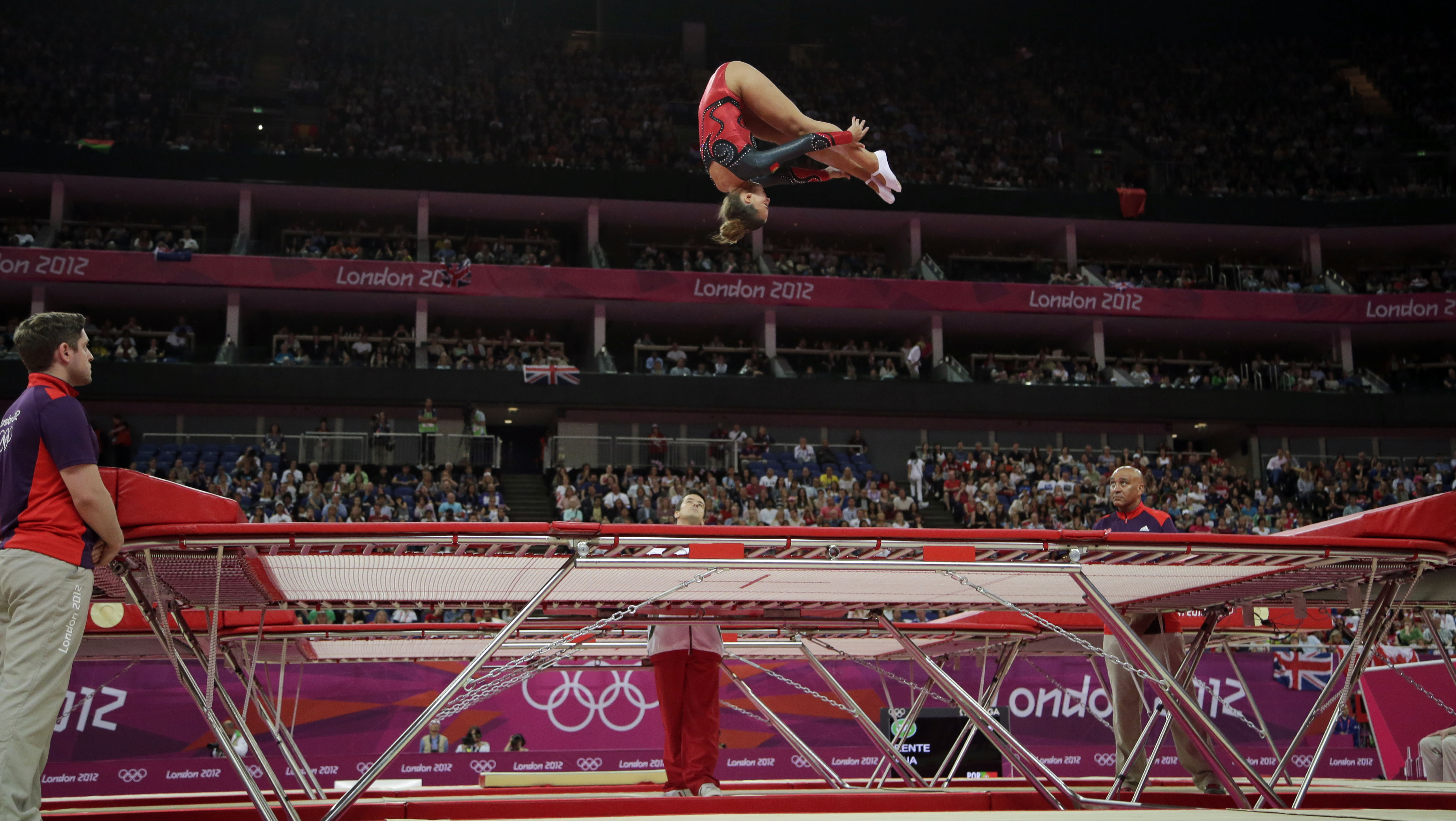Trampoline is a device that a person bounces or jumps on to perform aerial tumbling exercises. A trampoline may be used for recreation or for organized competition.

Trampolines may be circular or rectangular. They consist of a bed of solid or woven material that is suspended from a steel frame by rubber cords or padded steel springs. Trampolines are supported by legs nearly 4 feet (1.2 meters) high. Trampolines that are used in national and international competition are rectangular and have frames approximately 17 feet (5.1 meters) long and 91/2 feet (2.9 meters) wide. Trampolines used in competition must also have large thick pads, called safety platforms, attached to the two short sides. These platforms measure 10 feet (3 meters) long and 7 feet (2.0 meters) wide.

A number of safety rules should be followed to avoid injury while using a trampoline. At least one qualified supervisor should be present. Only one person should perform at a time. One or more spotters should stand along any side without a safety platform to protect the athlete if he or she bounces off the trampoline. Somersaults should be prohibited except in competitive programs with qualified instructors.
During competitive training, spotting belts are often used when practicing difficult skills, such as somersaults. The belt is attached to an overhead rig and fastened around the athlete’s waist. A rope-and-pulley system attached to the rig enables the instructor to control the athlete’s movements. For example, the instructor might suspend the athlete in mid-air to prevent an unsafe landing. Some trampolines are placed in a “pit” so that the frame and bed are at floor level. Trampolines should be inspected often for damage. They should also be kept in a locked room when not in use.
